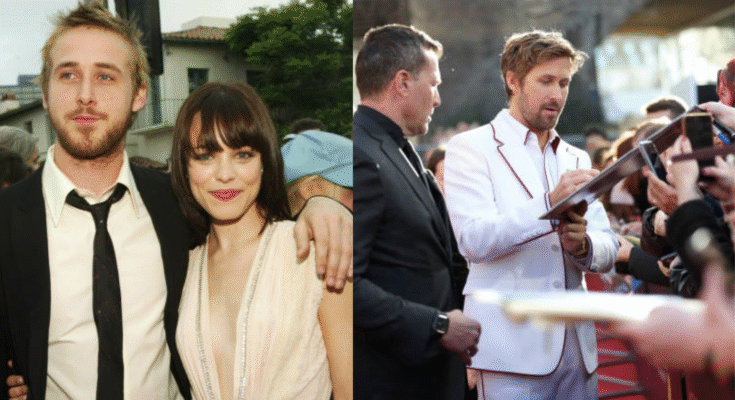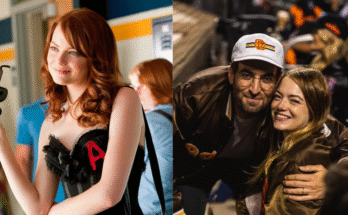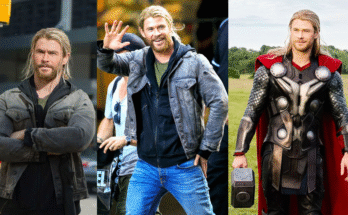The Heart Behind the Cool: Meet Ryan Gosling
Before he became known for his stoic intensity, his chemistry with leading ladies, or his directorial ambitions—Ryan Gosling was a Canadian child actor who transformed himself from teen idol into one of cinema’s most respected and artistically ambitious actors.
His journey proves that the most sustainable careers are built on refusing to be limited by early success, constantly challenging yourself with diverse roles, and integrating personal values into artistic choices.
How a Canadian Kid Became One of Cinema’s Greatest Actors
The Beginning: London, Ontario Roots
November 12, 1980 – Ryan Thomas Gosling was born in London, Ontario, Canada, to Thomas Ray Gosling, a traveling salesman for a paper company, and Donna, a secretary and former actress.
Growing up in Canada meant:
The Geographic Advantage:
- Far from Hollywood’s influence and pressure
- Canadian values of humility and authenticity
- Strong arts and theater community
- Developed outside American entertainment bubble
- Built genuine sense of self before fame
The Family:
- Working-class background, modest means
- Parents supportive but realistic
- Encouraged creative pursuits
- Instilled Canadian values of hard work
- Strong family bonds
The Young Performer: Early Recognition
Young Ryan discovered performance early:
“The Mickey Mouse Club” (1989-1994):
- Canadian version of American show
- Early performance experience
- Performed alongside Justin Timberlake and Britney Spears
- Built performance skills young
- Launched toward entertainment
The Realization: Unlike typical child stars, Ryan was:
- Educated alongside performance
- Not pushed aggressively by parents
- Allowed to develop at own pace
- Grounded in Canadian values
- Never just focused on entertainment
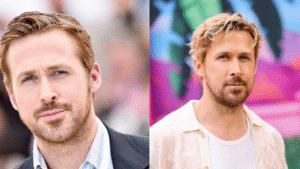
The Invisible Years: From Child Star to Serious Actor (1993-2003)
Canadian Television Work
Rather than immediately pursuing Hollywood, Ryan built foundation in Canada:
“Young Hercules” (1998-1999):
- Canadian television series
- Lead role in fantasy adventure
- Paid work that built credits
- Canadian television experience
“The Lovely Bones” (2002):
- Not breakthrough yet but building work
- Appeared in Hallmark productions
- Television movies and series
Early Canadian Films:
- Low-budget Canadian productions
- Character-driven dramas
- Building foundation in Canada
- Learning his craft outside spotlight
The Deliberate Approach
Ryan’s parents insisted on:
Education Alongside Performance:
- Attended school regularly
- Maintained academic focus
- Didn’t homeschool for acting
- Built well-rounded education
- Treated acting as career, not obsession
The Message: Ryan learned that acting wasn’t his only identity. He was an educated person who acted.

The Breakthrough: From Teen Idol to Serious Actor (2004-2010)
“The Notebook” (2004) – The Unexpected Success
Director Nick Cassavetes cast Ryan opposite Rachel McAdams in romantic drama “The Notebook.”
The Performance:
- Romantic lead role opposite rising star
- Showed vulnerability and emotional depth
- Created chemistry with McAdams
- Became beloved by audiences
- Launched him toward stardom
The Box Office:
- Grossed $115 million worldwide
- Proved he was bankable
- Made him globally recognizable
- Teen idol status emerged
The Strategic Choice: Rather than capitalizing on teen idol status by making more romantic comedies, Ryan made deliberately different choices.
Refusing to Be Typecast
After “The Notebook” success, Ryan could have:
- Remained romantic lead in teen dramas
- Pursued easy commercial success
- Built career on charm and good looks
Instead, he chose challenging, artistic work.
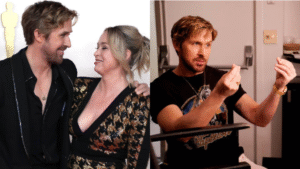
“Half Nelson” (2006) – The Dramatic Turn
Directed by Ryan Fleck, “Half Nelson” featured Ryan as Dan Dunne, a drug-addicted middle school teacher.
The Performance:
- Complex, morally ambiguous character
- Earned Academy Award nomination
- Showed dramatic depth beyond romance
- Played against type completely
- Destroyed teen idol image intentionally
The Significance: This was an artistic gamble that paid off. Ryan showed he could do serious drama.
“Lars and the Real Girl” (2007) – The Artistic Choice
Director Craig Gillespie cast Ryan in indie comedy about man who falls in love with life-sized doll.
The Role:
- Quirky, emotional character study
- Comedy with dramatic depth
- Independent film without big box office
- Showed willingness to take risks
- $5 million budget but critical success
The Message: Ryan prioritized interesting material over commercial appeal.
“Drive” (2011) – The Game-Changing Role
Director Nicolas Winding Refn cast Ryan as Driver, a Hollywood stunt driver who becomes a getaway driver.
The Performance:
- Minimalist, intense portrayal
- Barely speaks, communicates through presence
- Violent, complex character
- $81 million worldwide (indie success)
- Became cult classic
The Significance: This film established Ryan as serious artist. He showed he could carry complex indie film with minimal dialogue.
The Integration: Balancing Art and Commerce (2011-2020)
The Blockbuster Turn: “Crazy, Stupid, Love” (2011)
While doing indie films, Ryan appeared in mainstream comedy:
The Role:
- Charming, confident character Jacob
- Opposite Steve Carell and Emma Stone
- $142 million worldwide
- Showed comedic range
- Proved bankability for studios
The Strategy: Ryan balanced artistic indie work with commercial films. This gave him creative freedom while maintaining financial stability.
The Franchise Connection: “Blade Runner 2049” (2017)
Director Denis Villeneuve cast Ryan opposite Harrison Ford in sci-fi epic.
The Performance:
- Complex android character
- Opposite legendary actor
- $259 million worldwide
- $150 million budget
- Visually stunning and philosophically deep
The Significance: Ryan showed he could carry major blockbuster while maintaining artistic integrity. The film was both commercially viable and artistically ambitious.
Continuing Indie Work
While doing blockbusters, Ryan pursued:
“The Place Beyond the Pines” (2012):
- Indie drama about fatherhood
- Opposite Bradley Cooper
- $51 million worldwide
- Critical acclaim
“Only God Forgives” (2013):
- Nicolas Winding Refn collaboration
- Violent, experimental cinema
- Minimal dialogue
- $41 million worldwide
- Divisive but respected
“First Man” (2018):
- Damien Chazelle direction
- Neil Armstrong biopic
- $111 million worldwide
- Complex portrayal of American hero
Directorial Ambitions and Behind-the-Camera Work
“Lost River” (2015) – Directorial Debut
Ryan made his directorial debut with this indie film:
The Project:
- Self-written and directed
- Experimental, dreamlike quality
- Showed artistic vision
- Mixed critical reception
- Proved commitment to storytelling beyond acting
“Song to Song” (2017)
While pursuing acting, Ryan continued exploring behind-camera work and collaborations with visionary directors.
The Box Office Dominance: Numbers That Define Impact
Major Film Box Office:
- “The Notebook” (2004) – $115 million
- “Crazy, Stupid, Love” (2011) – $142 million
- “The Ides of March” (2011) – $87 million
- “The Place Beyond the Pines” (2012) – $51 million
- “Only God Forgives” (2013) – $41 million
- “Blade Runner 2049” (2017) – $259 million
- “First Man” (2018) – $111 million
- “The Gray Man” (2022) – Streaming success
- “Barbie” (2023) – $1.44 billion
Career Box Office:
- Films grossed $2.5+ billion collectively
- Bankable for both blockbusters and indie films
- Proven appeal across genres and audiences
Awards and Recognition:
- Academy Award nomination (for “Half Nelson”)
- Golden Globe recognition
- BAFTA nominations
- Multiple film festival awards
- Respected as one of cinema’s finest actors
Personal Life: Maintaining Authenticity
Marriage and Children
Eva Mendes (2011-Present):
- Married actress Eva Mendes
- Have two children together
- Extremely private family life
- Rarely discuss personal details publicly
- Protected children from spotlight
Staying Private
Despite extraordinary success, Ryan:
- Maintains strict privacy boundaries
- Rarely does interviews
- Keeps personal life completely separate
- Protects family fiercely
- Avoids tabloid culture
- Lives relatively normal life
The Message: Ryan proved that you can be a major star without exploiting your personal life. Privacy is possible with strong boundaries.
Canadian Connection
Ryan maintains:
- Canadian citizenship
- Connection to Canadian roots
- Support for Canadian artists
- Humility about success
- Values developed in Canada
- Gratitude for humble beginnings

The Secret Behind Ryan’s Unstoppable Excellence
Lesson 1: Refuse Early Typecasting
After “The Notebook,” Ryan could have remained romantic lead. He deliberately chose challenging indie work to avoid being limited.
Lesson 2: Balance Commercial and Artistic Work
Ryan proved that blockbusters and indie films aren’t mutually exclusive. Strategic choices allow both.
Lesson 3: Minimal Performance Can Be Powerful
In “Drive” and other films, Ryan showed that less is more. Silence and presence can be more compelling than dialogue.
Lesson 4: Expand Into Directing
By directing films, Ryan expanded his creative scope beyond acting. This integration kept him artistically engaged.
Lesson 5: Maintain Strict Privacy
In an age of oversharing, Ryan proved that you can be famous while protecting your personal life. Strong boundaries work.
Lesson 6: Education Alongside Performance
Ryan’s parents ensured he received education alongside entertainment. This grounding served him well throughout career.
Lesson 7: Pursue Interesting Material
Rather than chasing paychecks, Ryan consistently chose interesting characters with visionary directors. This built extraordinary filmography.
The Journey: Before & After
| Aspect | The Canadian Kid (1989-2003) | The Rising Actor (2004-2010) | The Master (2011-Present) |
|---|---|---|---|
| Recognition | Canadian TV actor | Teen idol | Respected artist |
| Financial Status | Modest working-class | Multi-millionaire | $16+ million net worth |
| Career Control | Limited by age | Building | Full creative control |
| Box Office Power | None | $100M+ films | $2.5B+ total |
| Artistic Credibility | Building | Growing | Universal respect |
| Indie Film Work | None | Growing involvement | Consistent choice |
| Directorial Work | None | None | Expanding directing |
| Privacy Level | Protected childhood | Increasingly public | Fiercely protected |
| Industry Respect | Unknown | Building | Universally respected |
| Filmography Quality | Learning craft | Mixed quality | Consistently excellent |

The Bottom Line: Why Ryan’s Story Matters
Ryan Gosling proved that the most artistically fulfilling careers are built on refusing to be limited by early success.
He could have:
- Remained romantic lead after “The Notebook”
- Pursued only commercial blockbusters
- Built career on charm and good looks
- Exploited personal life for publicity
- Followed obvious commercial path
Instead, he: ✓ Deliberately chose challenging indie roles ✓ Balanced commercial success with artistic integrity ✓ Maintained strict privacy boundaries ✓ Expanded into directing ✓ Worked with visionary directors repeatedly ✓ Proved less is more in performance ✓ Built filmography of masterpieces ✓ Remained grounded in Canadian values ✓ Protected family fiercely ✓ Proved that real success is artistic fulfillment
Key Takeaways for Ambitious Artists
🎬 Early success doesn’t have to define career 🎬 Refuse to be typecast by initial breakthrough 🎬 Balance commercial work with artistic fulfillment 🎬 Work with visionary directors repeatedly 🎬 Silence and presence can be more powerful than dialogue 🎬 Explore directing and behind-camera work 🎬 Maintain strong privacy boundaries 🎬 Stay grounded in your values 🎬 Education alongside performance matters 🎬 Interesting material matters more than paychecks
Ryan Gosling’s Defining Words
“I get a lot of things wrong, and that’s fine by me.”
“I’m probably not going to get married again, but I wouldn’t rule it out completely.”
“The characters I’ve played are nothing like me.”
“I like to be creative, and I think you can be creative in anything.”
“Filmmaking is a very collaborative medium, and you need to find people who share your vision.”
The Continuing Evolution
In his early 40s, Ryan continues to:
- Select only the most interesting roles
- Work with visionary directors
- Expand directing career
- Maintain family privacy
- Stay grounded in Canadian values
- Pursue artistic fulfillment
- Build creative empire
The Real Ryan Gosling Story:
Not just an actor who became famous. But an artist who:
- Refused to be limited by teen idol status
- Deliberately chose challenging indie roles
- Balanced commercial success with artistic integrity
- Worked with master directors repeatedly
- Expanded into directing and production
- Maintained fierce privacy boundaries
- Protected family despite enormous fame
- Remained grounded in Canadian values
- Built filmography of artistic achievements
- Proved that real success is creative fulfillment
In a world obsessed with fame and publicity, Ryan Gosling succeeded by refusing to participate in celebrity culture.
He’s famous because of his art, not despite it. He’s respected because he chose integrity over exposure.
That’s not just a career. That’s a revolutionary approach to fame.
